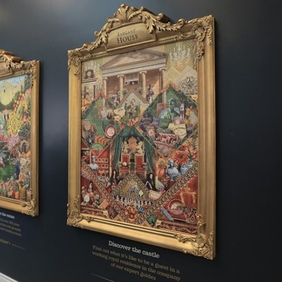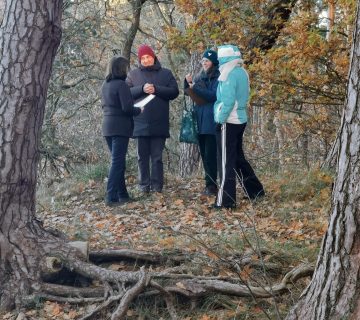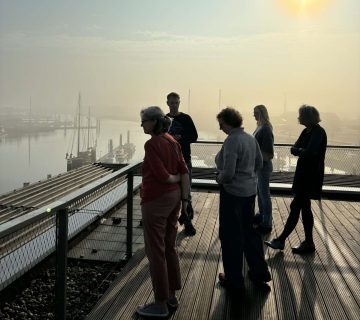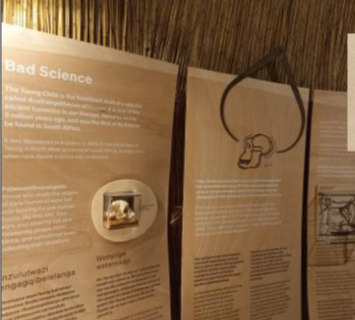Storytelling lies at the core of any interpretation project. You need to research your site and uncover those hidden narratives that people don’t know about. Ask yourself: are you making the most of every last detail to delight your audience?
That’s the approach that we took in curating the renewed visitor experience for Hillsborough Castle and Gardens (re-opened April 2019), under the direction of the public engagement and interpretation teams at Historic Royal Palaces, UK, and I’d like to share some of our lessons learned.
This grand old family home in Northern Ireland is brimming with untold stories and behind-the-scenes moments. Our challenge was to tease out these unsung elements and showcase them in new and innovative ways.
To achieve this, we identified five key areas to address:
• A warm welcome with the promise of time well-spent
• Surprise audiences with amazing secrets and fascinating facts
• A series of ‘wow’ moments where every detail counts
• Showcase regional talent in the formation of inspiring spaces
• Allow people to find their way, while getting lost in the experience
Here are my top tips for how you can use this approach to breathe new life into similar heritage sites.
1. Are you creating a warm welcome?
First impressions really count when it comes to establishing a strong sense of place. We commissioned a series of five handmade montages from Irish-bred artist Martin O’Neill; part of a vivid ‘welcome wall’ that sets the tone for the adventure ahead.
Infused with bright colours and an element of fantasy, these playful montages detail people and events from Hillsborough’s lively past – and invite guests along for the ride. There’s also a statement lightbox that cuts between the castle’s elegant Drawing Room as you see it today, and a glimpse of the same room in a Thatcherite era, showing the signing of the Good Friday agreement.
The admissions desk is based around a digital version of the welcome wall, with curtains drawn back to form a stage effect. Animated displays flick between moments in Hillsborough’s history, along with ticketing information.
Meanwhile, the entrance to the Clore Learning Centre in the Stable Yard is announced by a 3D metallic sign by illustrator Rob Ryan. A stalwart of East London’s booming creative scene, Ryan’s fresh approach creates an intriguing contrast to the estate’s regal history and resonates with children and parents alike.
Together, these features conjure up an air of anticipation and excitement. Visitors are tempted into a bygone world, full of unknown characters, unexpected discoveries and undiscovered facts.
2. How can you surprise your visitors and increase dwell time across their journey?
Rather than simply reciting facts, it’s far more effective to allow visitors to uncover stories and ideas for themselves. Our visitors are invited on a journey – of which they are the lead architect. To achieve this, we created a ream of intriguing, multi-sensory installations layered with hidden depths of meaning.
For example, a 9-metre-long wall outside the 18th century Pineapple House charts the history of the fruit from exotic climes to its centrepiece of a luxurious castle banquet – and includes life-size illustrations of Viscount Wills Hill. Visitors can interact with the structure, sliding back panels, unlocking doors or viewing through pictures to reveal further snapshots of colour and information.
The 100-acre gardens are similarly dotted with subtle, intriguing interventions designed to spark curiosity. And at the Edwardian summer house, budding David Attenboroughs can rifle through cupboards and drawers to reveal local wildlife and threads of natural history. Visitors can also get hands-on with the estate’s gardening heritage thanks to a portable cart loaded with costumes and equipment to explore the grounds.
Via unexpected moments, you too can create a thrilling journey of discovery where every step counts.
3. How can you unlock a sense of place and curate ‘wow’ moments?
This is about digging deep into the history of a place, in order to tell its story via a cast of bygone characters and events. Hillsborough offered a rich tapestry for storytelling: one of America’s founding fathers, Benjamin Franklin, once paced its maze of velvet-draped state rooms. Under the watchful eye of ancestral portraits, key political players hashed out the Northern Ireland peace process. The chandeliered hallways have hosted a succession of royalty and VIPs, including Princess Diana, the Dalai Lama, Desmond Tutu and the Queen of England.
Our challenge was to get visitors to step inside this elite world, so they could connect with its people and experience the drama of key political moments. In Downshire Gallery, an ornate hall of mirrors, guests can literally walk in the footsteps of history. A series of 12 elaborate mirrors showcase central figures and events from Hillsborough’s captivating past. Visitors can see themselves reflected in a reportage image of Tony Blair and President George Bush, pictured in deep conversation on the castle’s ornamental lawns, and can stroll in the shadow of Mo Mowlam, who negotiated the terms of the groundbreaking Good Friday agreement in 1998 from the grounds of Hillsborough Castle. Ornate arches, etchings and typographic treatment add to the sense of drama, along with a timeline that traces the history of the castle from its roots as the family home of Viscount Wills Hill to the present day (including digital film content).
In any destination with such a visceral sense of history, it’s important to curate ‘wow’ moments like these that spotlight personal stories and roll out the red carpet for all. This, in turn, creates memories that last a lifetime and sets the stage for moments that can be easily shared on social media and by word of mouth – a crucial part of generating brand awareness.
4. How can you showcase regional talent to create inspiring spaces?
Engaging local craft specialists is another really important part of a good visitor experience; and one that will encourage guests to return, time and again. We approached artisans in the County Down area to elevate the tucked-away outbuildings and woodland glens and other key points throughout the visitor journey. We researched regional stonemasons, iron workers and more.
We employed traditional blacksmithing techniques to create the castle’s new welcome sign and gates. These intricate carvings can be seen throughout the grounds, framing certain views in a fresh and suitably majestic perspective. Paving stones in the Friends Burial Garden were engraved with stories and quotes from its Quaker community and a bespoke engraved bench nestles within the estate’s secluded stone grotto. The Walled Garden, with its ancient fruit trees and apple orchard, is marked by a graceful stone carved placard.
This was a great opportunity to put regional talent on the map and showcase their work on a stage drawing international visitors. By doing this, you tie the visitor experience seamlessly to your heritage site and its community of caretakers. Your venue becomes an ongoing conservation project curated by those who love it the most. You can enhance this symmetry with calls to action urging visiting members of the public to join these makers and play their own part in safeguarding the future of a place.
5. How can you help people to find their way, while getting lost in the experience?
We used detailed signposts and maps to create a coherent visitor path throughout the site. We then overlaid this with creative storytelling, propped up by various visual and interactive design features. The idea is that the visitor can clearly find their way around, but at the same time discover the grounds in new and captivating ways. There are loose themes and styles that bring together touchpoints of our interpretation, but each guest is free to experience these in slightly different ways.
This isn’t simply a nice place to visit. It’s a wonderland filled with intriguing stories around every corner; whether that’s a wheelbarrow carrying an ice sculpture, a meandering woodland trail or a face in the mirror from a long-forgotten past.
To achieve this effect, you need to curate a visitor experience that appears as an organic, moving process. The test is to mould a journey that fires up the imagination and offers a range of different perspectives (depending on where you go and what you uncover). That way, guests are left with questions as well as answers; you give them a reason to return. There is always more for the visitor to see, different layers to uncover, new memories to be made.
A powerful sense of place lingers, too. Our interpretation at Hillsborough highlights the estate as a living, breathing project that guests can be part of, and help to evolve. The experience then harnesses a passion and participation in the project that will ensure its legacy for years to come.
Beverley Law is the founder and managing director of All Creative, a brand design agency with experience in the heritage sector. She can be contacted at: beverley@allcreatvebranding.com.




